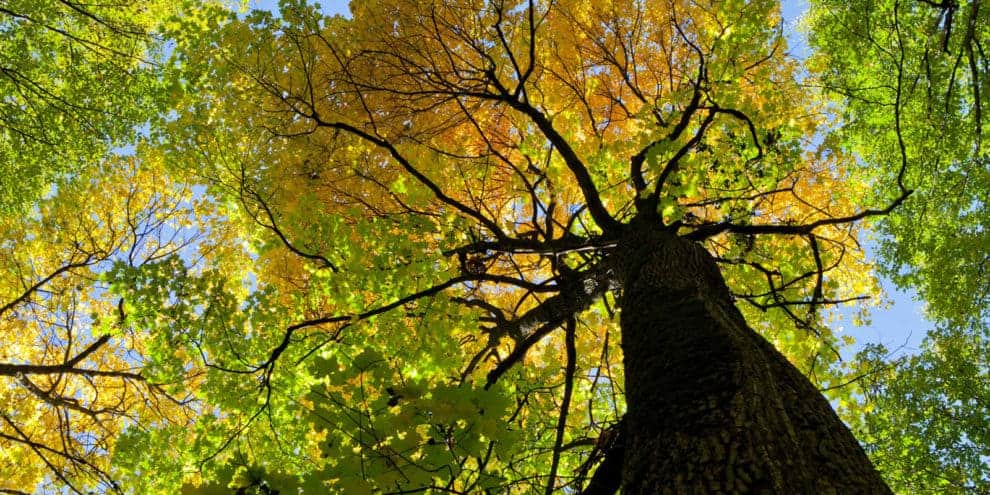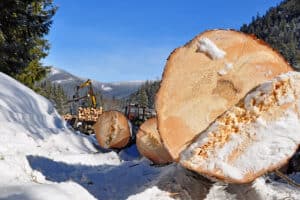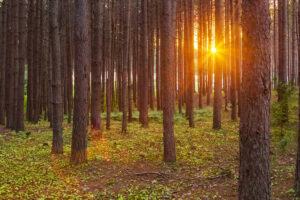Recently I had a question from a buyer relating to the standing timber on a property and how it affects the value of the parcel. Since much rural property is wooded, I realized that others may have many of the same questions. Below is an excerpt of his question and my answer:
Jay, .…my biggest problem is I still cannot get a handle on the ‘worth’ (based on return, not emotion) of timber property. I’m familiar with farmland returns and projections, but I have no clue on timberland. I’m having a difficult time figuring out what it is truly worth with the state and projections of the timber market. I know you cannot ‘advise’ on ‘worth’ of timber, but do you have any websites, publications, or other sources you could direct me for me to educate myself?
Well, that’s a million dollar question! The quick answer is: No, I don’t have a good place for you to go to educate yourself to the extent needed to determine timber value on a given property. Also, some sources of information and websites have a hidden agenda so you don’t get the complete picture.
The longer answer is that the timber value of a property is variable based upon current markets, the stand (species and density) on the property, when it was last cut and how much the owner is willing to harvest (how does he/she want it to look when the cut is completed). It is also complicated by what any existing government contracts will allow you to do. In Wisconsin, we have Managed Forest Law that sometimes plays into this. To further confuse the issue, hardwood timber value fluctuates based on the whims of interior designers and the public as certain wood species come into style, then fade away only to come back into vogue a decade or two later. Of course, the law of supply and demand dictates that the popular species are more valuable.
When I value a property to list it or advise a buyer client, I usually establish a baseline that assumes that there is a mix of hardwoods (which is what you usually find in the upper Midwest) and it hasn’t been logged heavily in the last 10 years. The key word is heavily as I don’t discount for a few trees harvested in that time frame as long as it hasn’t been decimated. For my purposes, if it is to be classified as wooded, then it has to have a various mix of trees of differing sizes. That is the baseline I use and I don’t add or subtract value if that is the case. Now if most of the mature trees were harvested recently and it will be more than 20-25 years before another harvest would be practical, I will subtract value. On the other hand if there hasn’t been a cutting in the last 20 plus years and there is an abundance of quality trees ready to be harvested, I will add value. Bear in mind that very seldom does a property become available that has a large quantity of mature trees unless the seller is very aware of their value to the property and wants a premium price.
That being said; the only way I know of for the typical buyer to determine the timber value on a property is to hire a forester to do a current valuation and estimate that value 5, 10, 15 or 20 years into the future. Don’t forget, you can’t just add that value to the value of the land because you do need some amount of trees just to be at the baseline that I described. Be aware that what a forester does is just an estimate. When I was in the lumber industry, it was not uncommon for several foresters to cruise the same stand of timber and have their estimates vary considerably.
While timber can add significant value to a property, unfortunately, it’s not as easy to quantify as tillable land income. Since you may not be able to realize the income from timer for a number of years, it generally needs to be viewed as a long term investment and in the mean time appreciated for its aesthetic value.
This content may not be used or reproduced in any manner whatsoever, in part or in whole, without written permission of LANDTHINK. Use of this content without permission is a violation of federal copyright law. The articles, posts, comments, opinions and information provided by LANDTHINK are for informational and research purposes only and DOES NOT substitute or coincide with the advice of an attorney, accountant, real estate broker or any other licensed real estate professional. LANDTHINK strongly advises visitors and readers to seek their own professional guidance and advice related to buying, investing in or selling real estate.










Realtors Land Institute offers a Timber class as part of their educational courses to achieve the ALC designation. Their website is http://WWW.rliland.com. Good luck!
Thanks for the comment James. Any education that agents and owners can get regarding timber will be to their advantage. That being said, I’ll add that without years of training or experience they will still likely need the services of a forester to get the true value of the timber. Having had 18 years in the timber industry prior to entering real estate, I’m pretty knowledgeable but the lumber market is ever changing (based on the economy) so I still refer clients to a forester.
Hey Jay, thanks for posting such a well written article. As author and instructor of the Timberland course that James mentions, I can state that the course definitely points out the need for a forester but also educates the participant on the dynamics of a timber cruise (timber estimate) and explains why there is such a variance in estimates as you mention. The participant will also learn what makes one property attractive as an investment and another one not attractive (plus a whole lot more). The course is not limited to just real estate professionals but can be taken by anyone interested in learning more about this subject. Just contact RLI as James said.
Extension offices also have programs for non-foresters helping explain some of the basics on valuation. I often have programs at landowner meetings trying to explain some of the factors affecting value.
Thanks Rick and Tamara. You both make great points. Having a basic knowledge of how a forester comes up with a timber value and how that relates to the property value would be very useful for the property owner.
If a landowner/buyer has some basic knowledge (as you can get from the Extension courses mentioned) he/she can have an informed conversation with the forester that provides the timber value estimate for a particular property.
Every estimate is based on assumptions. Ask your forester to tell you his assumptions and sources of the timber values he used in that estimate. Ask how that value would change if other assumptions are used. Be sure the “value” you get alligns with assumptions you think are likely. Then you’ll have a value estimate that will serve you in decisionmaking.
Thanks for contributing to the post Bob. Could you please explain what you mean by “assumptions” and give some examples?
Thank you.
My wife’s grandparents had about 100 acres of heavily timbered land in North Carolina. My wifes uncle wanted to buy out my mother in laws half of the property. Bad blood ensued when we had an appraisal and a Forrester both look over the property and value came to a combined $300,000. The brother had an appraisal done that came in at $125,000 and argued he should only have to pay half of the $125,000 to buy her sister out. Well, things only got worse from there but I can say we got my mother in law $150,000 for her half from the sale of the land with the timber! My mother in law has stage 3c colon cancer and her brother still hasn’t spoker with her in over 10 years!
Hello, I am kinda stuck in a similar predicament as your in-laws . I have been told that I’m not allowed to add the appraisal of the trees to the appraisal of the property. My brother only wants to pay me for the property appraisal price. If you can tell how and why the court made the decision in favor of your in-laws I would really appreciate it! Thank you
I have a question: do you think there are timberland properties n the US where the current value of the trees (if cut today) are worth more than what the seller will accept for the property? Example, seller will sell 40 acres for $2 million. Buyer buys the land and immediately sells the trees for $3 million.
I recall the Seattle School District sold land many years ago under a contract and the buyer logged it and skipped the country with a few million dollars, without paying the note. He became a fugitive felon. The School District foreclosed and had the land appraised and re sold it for more than twice the millions the original buyer defaulted on. He could have simply disposed of the property himself and paid the note and had twice the profit without becoming a fugitive. So both the School District and the Original fraudulent buyer seriously under valued the property. I am not aware if the timber sold for more than the original transaction price.